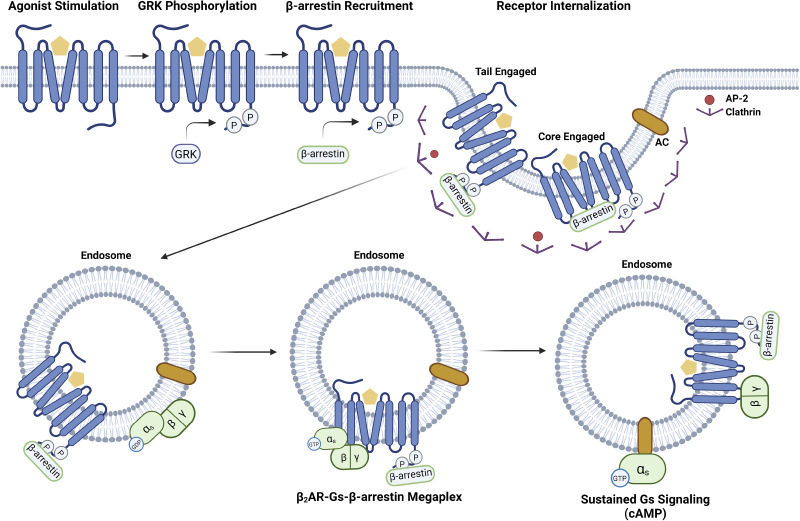Figure 3.
GPCR desensitization and internalization. Two critical factors are involved in receptor desensitization and internalization after stimulation. The first is GRK phosphorylation of the C-terminal tail of the GPCR. The second is β-arrestin recruitment to the phosphorylated receptor followed by clathrin-dependent internalization. Depending on the GPCR-β-arrestin complex conformation, β-arrestin may either bind to the core (core conformation) or the tail (tail conformation). Because the tail conformation presumably exposes the core for further G protein interactions, it is possible to form a GPCR-G protein-β-arrestin “megaplex” that can exhibit sustained G protein signaling as demonstrated for the β2AR and cytoplasmic cAMP generation (147, 148). Figure created with BioRender and published with permission. β2AR, β2-adrenergic receptor; cAMP, cyclic AMP; GPCR, G protein-coupled receptor; GRK, GPCR kinase.

